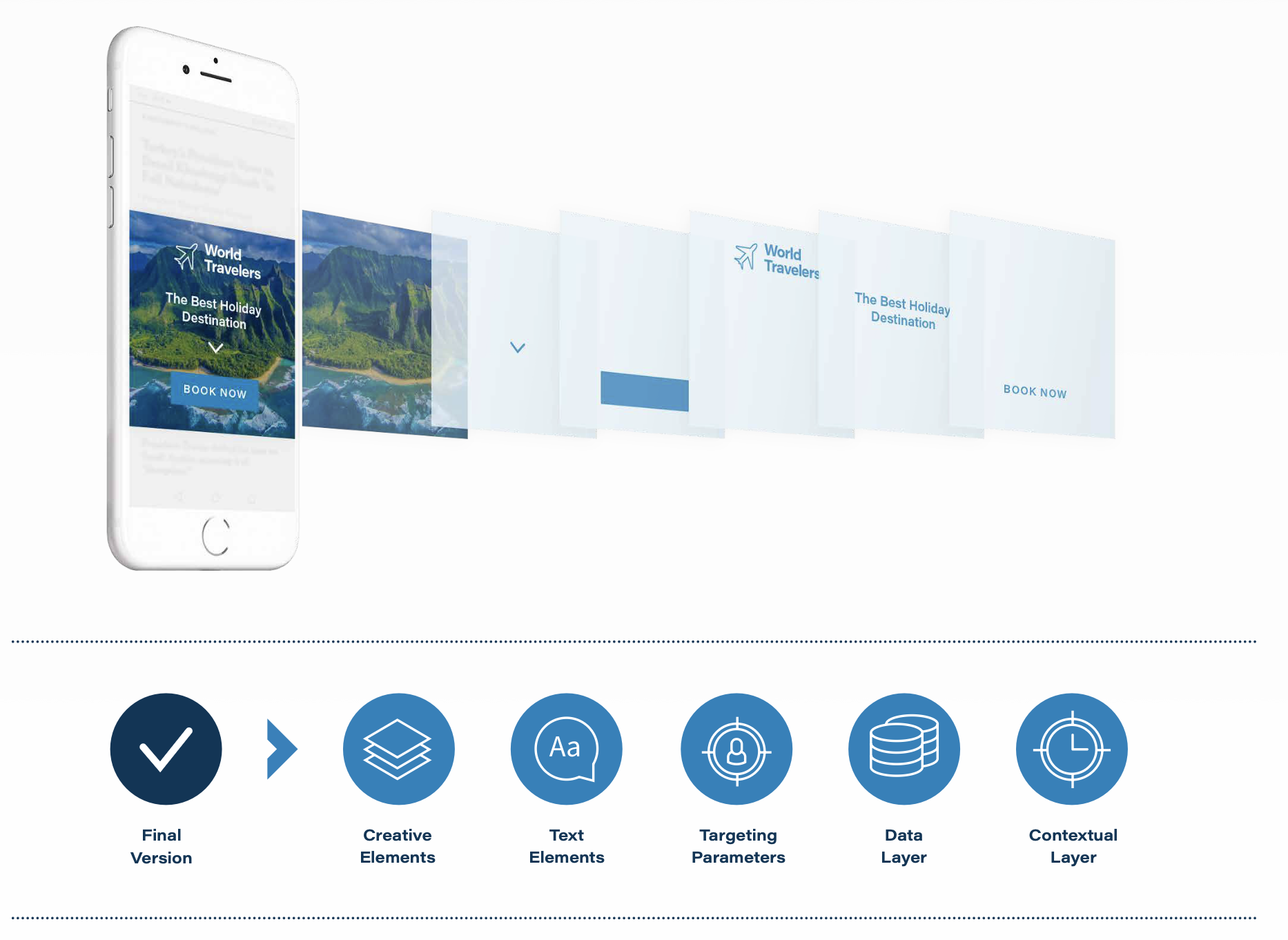In today’s hyper-competitive digital landscape, consumers are flooded with ads every time they scroll, stream, or search — yet only a small fraction of those messages truly resonate. Relevance has become the new currency of attention, making it essential for brands to evolve their creative and data strategies to stay visible.
As AdExchanger notes, even as privacy regulations and data signal loss reshape the digital ecosystem, creative remains one of the most powerful levers for performance — and technologies likeDynamic Creative Optimization (DCO) are redefining how brands can use it. Today,DCO is increasingly powered by AI-driven decisioning, enabling brands to generate and adapt creative elements —visuals, copy, and calls-to-action — in real time. As McKinsey points out, advances in generative AI allow marketers to personalize content at scale, turning DCO into an intelligent system that learns from performance data to deliver more relevant, human-like storytelling at speed.
What Is DCO and Why It Matters
Dynamic Creative Optimization automates the process of customizing ad content in realtime, based on data signals such as demographics, browsing behavior, location, device type, or even weather conditions. Instead of showing the same static banner to all users, DCO enables brands to dynamically assemble creative components — like headlines, images, calls-to-action, or offers — to match individual audience profiles.
The result? More relevant ads, higher engagement, and stronger performance.
But the benefits go far beyond personalization. DCO helps marketers:
- Enhance efficiency: Automating creative versioning drastically reduces production time and cost.
- Improve optimization: Real-time testing and algorithm decisioning identify the best-performing ad combinations automatically.
- Unify storytelling: By connecting creative messaging with data insights, brands can deliver coherent narratives across channels and stages of the customer journey.
- Scale effortlessly: With DCO, a single creative template can produce thousands of variations that adapt seamlessly to different audiences, platforms, and formats.
In essence, DCO enables advertisers to speak directly to consumers — with the right message, in the right moment, and at the right scale.
Adform DCO Pro: Bringing Mass Personalization Within Reach
Adform, aglobal advertising technology leader, has elevated DCO to the next level with DCOPro — a fully integrated, cross-channel solution designed for marketers seeking both creativity and control. It’s not just an upgrade; it’s a unified creative, data, and trading ecosystem that simplifies dynamic ad management while delivering measurable results.
Unified, Cross-Channel Approach
The strength of DCO Pro lies in its integration. Adform connects its ad server, demand-side platform (DSP), and data management platform (DMP) under one system, allowing creative decisions to be informed directly by live campaign data. This unified setup reduces the friction that often exists between creative production and programmatic buying — a challenge many advertisers still face.
AI-Driven Optimization
Machine learning plays a central role in how DCO Pro operates. The platform uses real-time performance data to determine which creative variations perform best and automatically refines future impressions. Adform reports notable efficiency gains — such as faster creative deployment and lower production costs — which align with industry trends toward automation and adaptive advertising.
Flexible Creative Framework
One of the platform’s more practical advantages is its modular creative structure. Advertisers can build flexible templates that serve as long-term frameworks, updated continuously rather than rebuilt for every campaign. This approach allows for more sustainable creative operations and consistent messaging across markets and formats.

Connecting Media and Messaging
A distinctive feature, Adform Signals, links creative decisions with media parameters like budget, location, and frequency. This means the same creative logic can be applied to programmatic trading, helping teams align creative and media strategies more effectively — an area where many DCO implementations still fall short.
The Future of Advertising Is Dynamic
Dynamic Creative Optimization represents more than just a technological innovation — it signals the rise of AI-powered creativity. By combining data, media, and design within intelligent systems, DCO enables brands to craft personalized stories at scale, automate decision-making, and continually learn from performance to improve results.
In a world where audiences expect relevance, authenticity, and instant connection, dynamic, AI-driven advertising is no longer optional — it’s essential. The future belongs to brands that can unite human creativity with machine intelligence to deliver the right message, to the right person, at the right moment — intelligently, efficiently, and with impact.
References:
“What Is The Future Of Dynamic Creative Optimization (DCO)?” — AdExchanger, 2024 adexchanger.com
McKinsey Quarterly. Unlocking the next frontier of personalized marketing, 2025 McKinsey.com
Adform. DCO Pro Presentation in PDF
Case Study: BMW Saves Production Costs and Discovers the Right Audiences With Adform, site.adform.com


.png)

